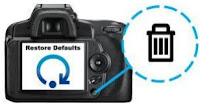
Since the first release of the Maygion H.264 IP Camera in 2012, there's been a lot of progress made both on the software and the hardware side.
While the price didn't change, the value has increased...
... until you're dead or I find someone better (Starship Trooper - 1997)
 I've accumulated many different IP Cameras over time, and their location in my house reflects their rank (best cameras for the most important rooms).
I've accumulated many different IP Cameras over time, and their location in my house reflects their rank (best cameras for the most important rooms).The Maygion H.264 (aka H502W, WIP604MW) pushed away the other models to become the full-time guardian of my living room, making it the de-facto Nr.1.
When I stated above that the price didn't change, it's not completely true:
From an E.U. perspective, It ends up cheaper buying from UK (~80€ Tax & Shipping incl.) than from China (~100€ with shipping and customs duty paid). The delivery time and effective product guarantee (how much are you willing to pay to ship it back to China?) are also factors to consider.
 |
| The LED ring sensor is now properly shielded to prevent Night/Day mode switching problem. |
Six month and as many firmware updates later, the list of features has increased, with more languages and the addition of P2P and ONVIF protocol support (that I still consider as in progress though)
 My very first action with this new IPC was to use the url http://192.168.1.111:81/board.dat in order to backup the precious license file. The camera came in version 05.53 with the OEM user interface.
My very first action with this new IPC was to use the url http://192.168.1.111:81/board.dat in order to backup the precious license file. The camera came in version 05.53 with the OEM user interface.This interface is very easy to customize and some distributors provide their own User Interface. Dericam download section has one and also some interesting content like the updated Maygion repair tool.
 P2P
P2PThere's a label on the bottom of the camera with an unique DDNS url and userid. The device is already set for this DDNS and can directly be accessed from the Internet without further struggling with your router.
The QR code at the base of the camera can be scanned from iPhone apps like P2P Master (Android version just out!) to insert the device information directly.
ONVIF

With ONVIF standard, an IP Camera client does not need to keep track of thousands of models, just one Onvif "brand" that will work for any compliant camera.
It's not yet fully implemented and works partially in Synology's Surveillance Station. Something to follow closely.

The CD included in the box contains the IPCamTool to locate and configure the camera on the network
The viewer utility, "Master", regroups the same range of functions as the ActiveX web interface but in a slightly more convenient interface in my opinion.
Unleashed potential ?
Still no preset positions:
Despite all the software improvements and the presence of html pages preset.htm inside the camera, there's still no way to define preset positions or video masks (videomask.htm) and I can only think of some hardware limitation for such common features to be still absent today.
 SSL, one day? Some other inside content suggest that the camera would be able to support SSL, but all this could also just be part of a common framework and reserved for higher grade or future models.
SSL, one day? Some other inside content suggest that the camera would be able to support SSL, but all this could also just be part of a common framework and reserved for higher grade or future models.Conclusion:
Despite lacking of some common features like preset positions and video area masking, the Dericam H502W is a nice and solid IP Camera, delivering a superb image quality and constantly improved by means of firmware updates. It's one of the first in that price range to adopt the ONVIF protocol and a dream come true for hackers (the hobbyist kind of hacker, I thought I'd need to clarify...)
Many thanks to Microsat.co.uk for providing me with the new Maygion H.264 reviewed here
as well as for all the help and information given in the last few months!
Please note: The unit reviewed here is a OEM, non-branded H.264 IP Camera, which software is developed by Maygion. It is otherwise sold by Dericam as H502W, by Cybernova as WIP604MW, by Eyesight as ES-IP902W, by Chinavasion asCVL-I234-2GEN, by Anxin as HW-M1007RNBCT... .
-10-14-56.jpg)




+559x458+%E2%80%93+GIMP-10-00-24.jpg)


.jpg)






.jpg+-+Windows+Photo+Viewer-14-16-49.jpg)






